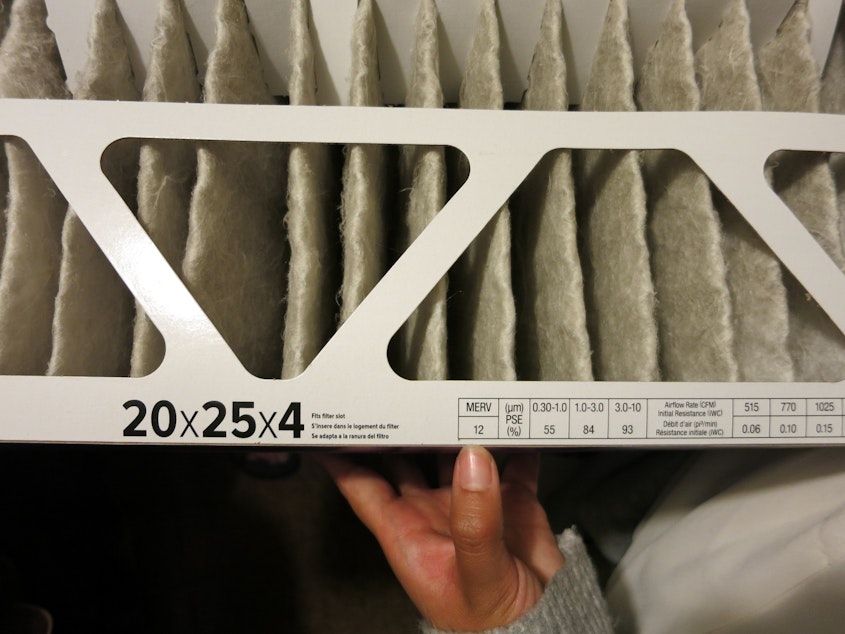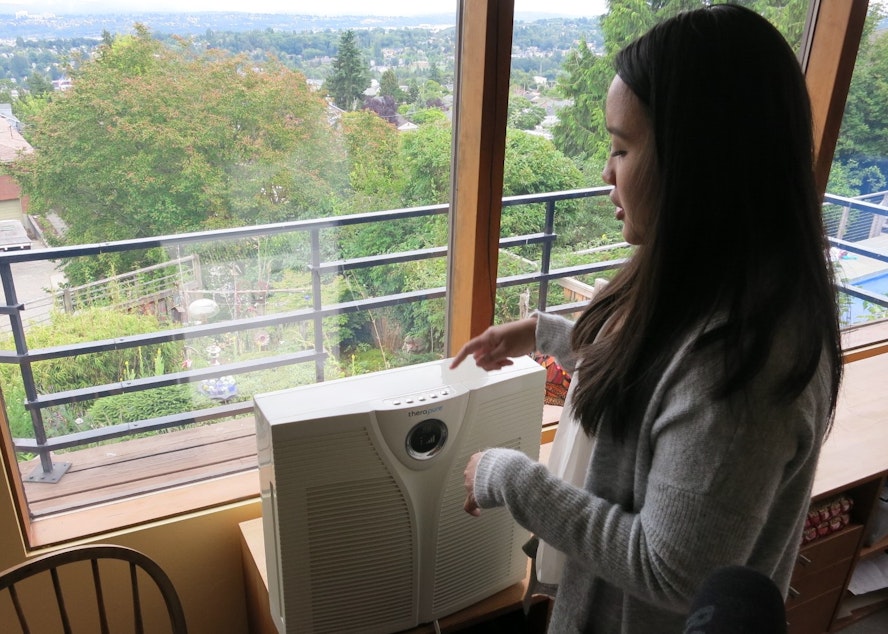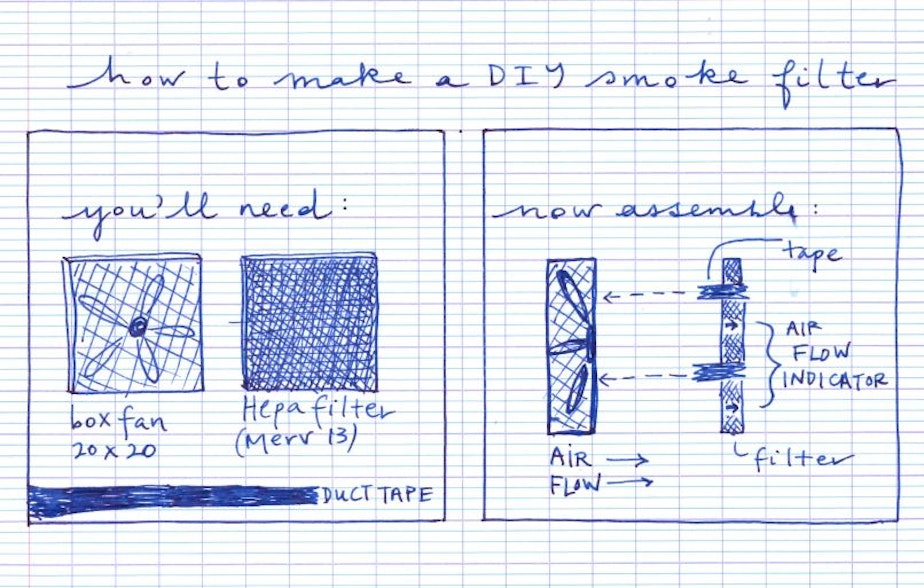5 tips for limiting wildfire smoke in your house

From their home on West Seattle, the Pliskes have a panoramic view of the Seattle skyline and Beacon Hill.
The last two summers, wildfire smoke has swallowed up the view. “From being able to see as far as Mount Baker to not being able to see across the street,” Janet Pliske said.
The view from their house is the least of their concerns.
About five years ago, her husband, Chuck Pliske, was diagnosed with a lung disease called chronic obstructive pulmonary disease, or COPD. That makes it hard to breathe. Climbing a flight of stairs takes three minutes, he said, if he doesn’t want to suffer.
“I have two choices: I can either climb the stairs very slowly, or I can run up the stairs and then I have to sit down and suffer for a few minutes afterwards from not having enough air,” he said.
During heavy periods of wildfire smoke, the couple stayed indoors. She felt helpless, and reached out to KUOW to ask if there was a way to better prepare for this year's wildfire season.
Sponsored
We contacted the American Lung Association, and Xamantha Curameng with the Master Home Environmentalist Program stopped by the Pliske’s house with some advice. The program does free home consultations about how to improve indoor air quality.

Air purifiers
Make sure your air purifier does not produce ozone, which irritates the lungs. Even low levels of exposure to the gas can harm your health.
Sponsored
When buying an air purifier, stay away from terms like “electronic” and “ionizing.” Curameng handed the Pliskes a sheet from the California Air Resources Board with specific make and model numbers of purifiers that don’t produce ozone.
On top of that, make sure that the machine is up for the job by matching the purifier’s capacity to the square footage of the room you want to filter. Consumer Reports also has an air purifier buying guide.
DIY box fan purifier
You can also make your own air purifier with a filter rated Merv 13 and a box fan.

Sponsored
Shoes off
Curameng pulled a small welcome mat out of a bag, black with tight ribbing, like what you’d see at the entrance to a mall. Curameng calls it a “walk off mat.”
The American Lung Association recommends removing your shoes at home, or at least using floor mats at the door, so you don’t track anything in.
Sponsored
“For example, during a wildfire event, particles that have settled outside that have stuck to the bottom of your shoes,” Curameng said. “Walking over the walk off mat can help prevent you from bringing that inside your home.”
Protect your indoor air
When the air gets smoky, reduce your exposure as much as possible; stay inside and close the windows and doors to keep smoke out.
“If you do feel like there is still some smoke coming in, putting a wet towel at the cracks of the doors and windows can also help,” Curameng said.
And try and keep the air in the home clean. Don’t use air fresheners or incense and don’t fry food, because she says all those release particles you would inhale.
Sponsored
Air filters
If you have central air in your home, you can upgrade the filter in the system to better remove particles from wildfire smoke.
We asked Curameng to venture into the Pliske’s basement. Chuck removed a hatch on the side of the furnace, pulled out the air filter and handed it over. It was a Merv 12 — too low.
The American Lung Association recommends a filter with a MERV rating of 13 or above (as long as it works with your central air system). That’s a measure of efficiency that stands for Minimum Efficiency Reporting Value; the higher the rating, the more particles in the air the filter catches, according to the Environmental Protection Agency.




